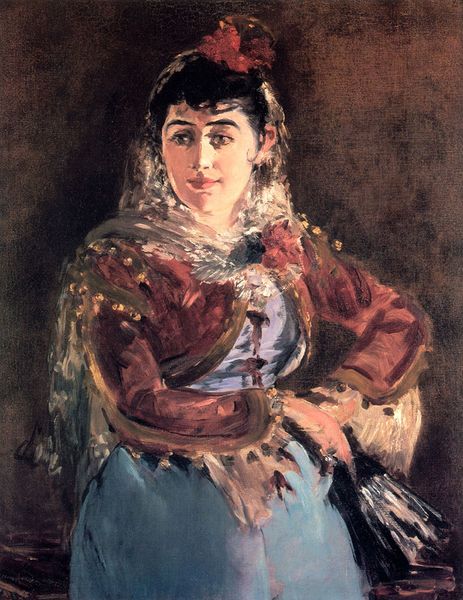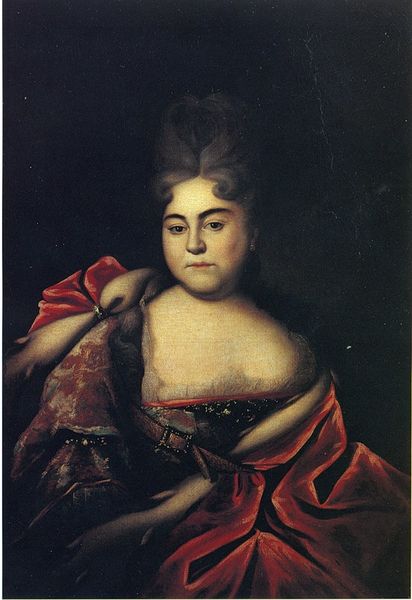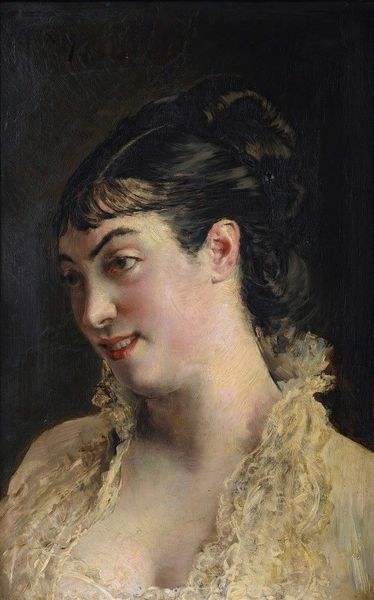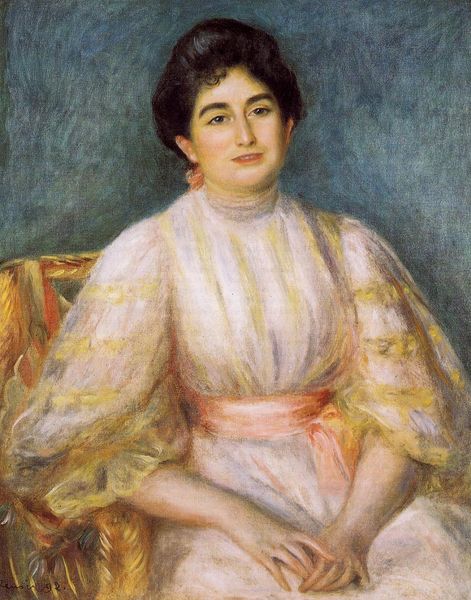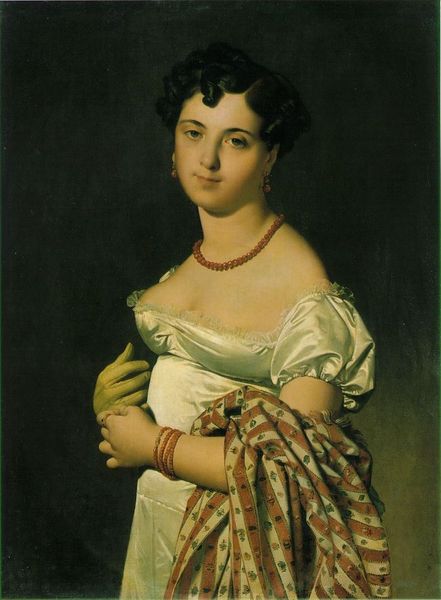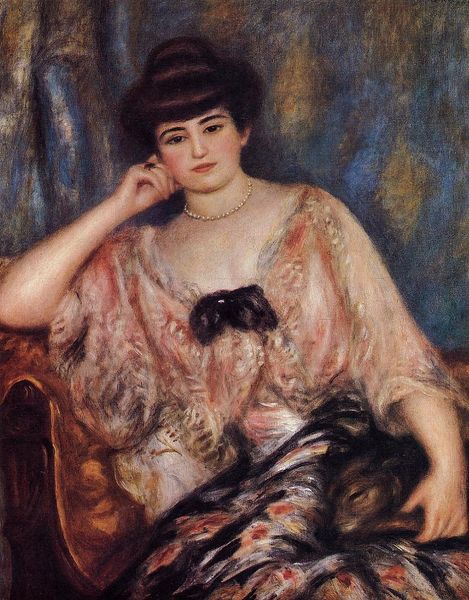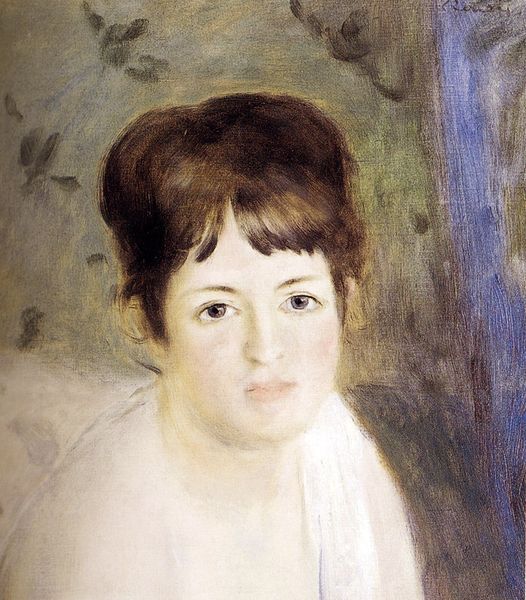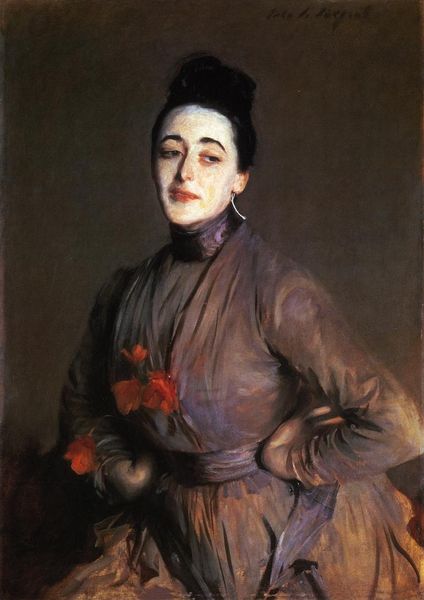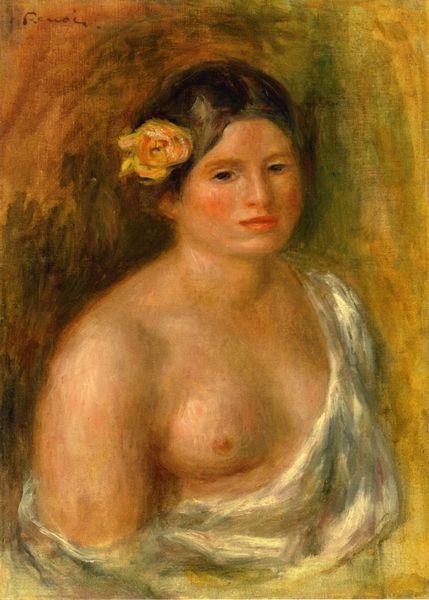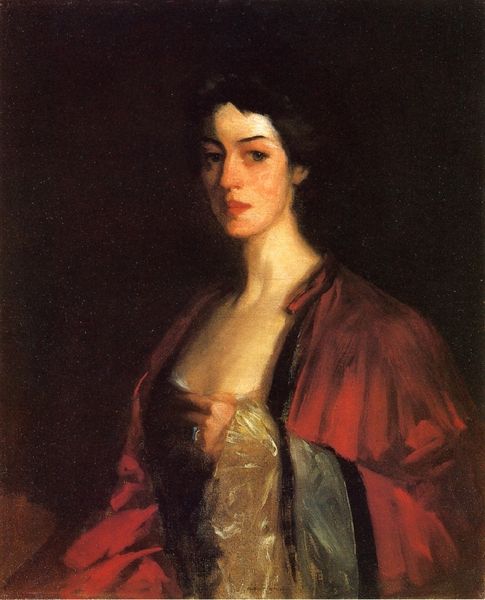
painting, oil-paint
#
portrait
#
painting
#
impressionism
#
oil-paint
#
oil painting
#
modernism
#
realism
Copyright: Public domain
Curator: Édouard Manet’s "Jeanne Martin in Pink Dress," painted in 1881, captivates with its subtle rendering of a woman poised in quiet contemplation. Editor: There’s a softness to it, almost a dreamy quality. The hazy background sets off the warm tones of her dress and skin. The overall effect gives the impression of comfort and maybe even quiet wealth. Curator: It is interesting to think about the production of portraiture in the 1880s. Portraits cemented social status, they were deeply ingrained in the prevailing ideologies of the period, particularly with respect to gender roles. This, like many portraits, participates in that culture. Editor: Look at the confident brushstrokes. See how they describe not just the fall of light on her shawl but also the textile itself? I wonder where that fabric was sourced, and who produced it? Manet’s genius lies in using the very materiality of the paint to evoke a sensory experience of the portrayed figure and her possessions. It pushes us to wonder about what tangible conditions are necessary to bring this picture into being. Curator: You’re right to focus on those broader, unseen social elements. Consider too how her averted gaze reinforces the traditional depiction of women as objects of observation, always perceived and rarely active agents. Editor: Yet there's a dignity in her stillness, too. This is hardly a simple reproduction of status. I see the material choices here adding a certain subversive depth. She's solid; her pink dress makes the whole image shimmer with almost tactile textures. She feels less like a distant symbol and more like a woman we can connect with. Curator: In its time, the image presented a new vision of femininity that wasn’t purely passive. That, in itself, was quite daring, even if the roots of that depiction still stemmed from established traditions. Editor: Perhaps. The painting certainly prompts us to ponder the materials, the maker, and the sitter as equally relevant elements in this conversation across time. Curator: Absolutely, and situating Manet within the ongoing evolution of gendered representation remains essential in unpacking this artwork’s enduring appeal.
Comments
No comments
Be the first to comment and join the conversation on the ultimate creative platform.
